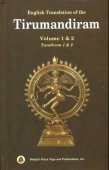Siddhantin, Siddhāntin: 7 definitions
Introduction:
Siddhantin means something in Hinduism, Sanskrit. If you want to know the exact meaning, history, etymology or English translation of this term then check out the descriptions on this page. Add your comment or reference to a book if you want to contribute to this summary article.
In Hinduism
Vyakarana (Sanskrit grammar)
Source: Wikisource: A dictionary of Sanskrit grammarSiddhāntin (सिद्धान्तिन्).—A term used in connection with the writer himself of a treatise when he gives a reply to the objections raised by himself or quoted from others, the term पूर्वपाक्षिन् (pūrvapākṣin) being used for the objector.

Vyakarana (व्याकरण, vyākaraṇa) refers to Sanskrit grammar and represents one of the six additional sciences (vedanga) to be studied along with the Vedas. Vyakarana concerns itself with the rules of Sanskrit grammar and linguistic analysis in order to establish the correct context of words and sentences.
Languages of India and abroad
Sanskrit dictionary
Source: DDSA: The practical Sanskrit-English dictionarySiddhāntin (सिद्धान्तिन्).—m.
1) One who establishes a conclusion after noticing and answering objections (or pūrvapakṣa).
2) One learned in scientific text-books.
3) A follower of the Mīmāṃsā philosophy.
Source: Cologne Digital Sanskrit Dictionaries: Shabda-Sagara Sanskrit-English DictionarySiddhāntin (सिद्धान्तिन्).—m. (-ntī) 1. A follower of the Mimansa philosophy. 2. A demonstrator, one who establishes his conclusions. E. siddhānta demonstrated conclusion, ini aff.
Source: Cologne Digital Sanskrit Dictionaries: Aufrecht Catalogus CatalogorumSiddhāntin (सिद्धान्तिन्) as mentioned in Aufrecht’s Catalogus Catalogorum:—Āśvalāyanaśrautasūtrabhāṣya. Quoted by Bhāskaramiśra Bp. 28.
Source: Cologne Digital Sanskrit Dictionaries: Monier-Williams Sanskrit-English Dictionary1) Siddhāntin (सिद्धान्तिन्):—[from sidh] m. one who establishes or proves his conclusions logically, one learned in scientific text-books, [Horace H. Wilson]
2) [v.s. ...] = mīmāṃsaka, [cf. Lexicographers, esp. such as amarasiṃha, halāyudha, hemacandra, etc.]
Source: Cologne Digital Sanskrit Dictionaries: Yates Sanskrit-English DictionarySiddhāntin (सिद्धान्तिन्):—(ntī) 5. m. A follower of the Mimāṃgsā philosophy.
[Sanskrit to German]
Sanskrit, also spelled संस्कृतम् (saṃskṛtam), is an ancient language of India commonly seen as the grandmother of the Indo-European language family (even English!). Closely allied with Prakrit and Pali, Sanskrit is more exhaustive in both grammar and terms and has the most extensive collection of literature in the world, greatly surpassing its sister-languages Greek and Latin.
See also (Relevant definitions)
Starts with: Siddhantins.
Ends with: Karukasiddhantin, Somasiddhantin.
Full-text: Acaryadeshiya, Somasiddhantin, Karukasiddhantin, Siddhantins, Sittanti, Cittanti, Tattva, Naishthika, Bhautika, Yati, Bhikshu, Grihastha, Vanaprastha, Ashvalayana.
Relevant text
Search found 12 books and stories containing Siddhantin, Siddhāntin; (plurals include: Siddhantins, Siddhāntins). You can also click to the full overview containing English textual excerpts. Below are direct links for the most relevant articles:
Sivaprakasam (Study in Bondage and Liberation) (by N. Veerappan)
Interpretations of the Mahavakyas by Umapati Shivam < [Chapter 5 - Concept of Advatia]
Basis of advaita < [Chapter 5 - Concept of Advatia]
Works by Earlier Shaiva Siddhanta Teachers < [Chapter 1 - Introduction]
The Religion and Philosophy of Tevaram (Thevaram) (by M. A. Dorai Rangaswamy)
The various sects of Shaivism < [Volume 2 - Nampi Arurar and Mythology]
Chapter 1 - Nature Mysticism < [Volume 4.2.1 - Philosophy of Nature]
Taittiriya Upanishad Bhashya Vartika (by R. Balasubramanian)
Verse 2.648 < [Book 2 - Brahmavallī]
Verse 2.692 < [Book 2 - Brahmavallī]
Verse 2.390 < [Book 2 - Brahmavallī]
Siddhanta Sangraha of Sri Sailacharya (by E. Sowmya Narayanan)
Mimamsa interpretation of Vedic Injunctions (Vidhi) (by Shreebas Debnath)
Chapter 3 - Utpattividhi (Introduction)
Chapter 2.5 - Mīmāṃsaka’s conclusion on the meaning of ‘Liṅ’
Chapter 4.4 - Divisions of Subsidiary Actions and Subsidiary Matters
Brahma Sutras (Ramanuja) (by George Thibaut)
Sutra 2.4.1 < [Second Adyaya Fourth Pada]
Related products
